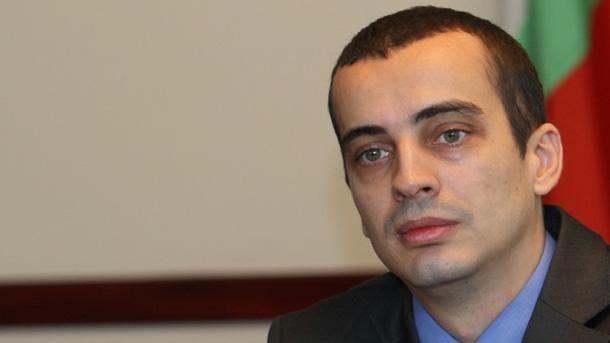A marble bas-relief work with god Mithra depicted in the center has been presented at the Museum of the History of Sofia. The monument found in the village of German near the Bulgarian capital city is extremely valuable and is now part of the museum's collection. It dates back to the Roman era and it is believed it was created in the third century. Todor Chobanov, archaeologist and Deputy Mayor of the Sofia Municipality responsible for culture pointed out that Roman arrived to Bulgarian lands in the 1st century. They probably reached agreement with local people and created a new settlement on the foundations of an earlier one. This was the Roman town of Serdica that was later to become modern Sofia. The city was very important for the Roman Empire because of its strategic location between East and West.
 "Serdica had particularly interesting and unusually rich religious life,” says Todor Chobanov. “We know that cities in the periphery of the empire lacked the usual variety of religious cults. But since the settlement was situated at a crossroads, Roman troops regularly passed through Serdica. There are hundreds of pieces of archaeological evidence that their major route passed through this place. This was how a number of popular religious teachings started flourishing in Serdica. Some of them left their mark and played a big role in the pre-Christian spiritual life of our city. "
"Serdica had particularly interesting and unusually rich religious life,” says Todor Chobanov. “We know that cities in the periphery of the empire lacked the usual variety of religious cults. But since the settlement was situated at a crossroads, Roman troops regularly passed through Serdica. There are hundreds of pieces of archaeological evidence that their major route passed through this place. This was how a number of popular religious teachings started flourishing in Serdica. Some of them left their mark and played a big role in the pre-Christian spiritual life of our city. "
One of these cults was associated with Mithra - a god of Eastern origin. This cult was very popular during 1-4th century and it is believed that one of its main centers was Serdica. In the fortified part of the city a temple of Mithra was discovered.
"The cult has its roots in the Zoroastrian religion, but in the Roman Empire, this eastern god acquires specific characteristics. The cult was popular mainly among Roman soldiers. This was legionaries’ faith, and scholars claim that if it was not for Christianity, the Roman Empire would have become an Empire of Mithraism. Unfortunately, like other religious practices based on the principle of mysteries, the religious practices were transferred only in oral form. This was done within the framework of special schools, some of which were preserved in Rome. They were called mithreums."
This explains why there is not enough written evidence of this cult. Usually three main scenes are depicted in such reliefs in honor of Mithra. The first shows how Mithra was born from the rock. The second scene shows him sacrificing a bull and in the third scene he has a feast together with the god of sun. This makes Mithraism similar to other solar cults. In this respect scientists found similarities with Christianity. "Christmas for example, was one of the most important holidays in Mithraism - the birth of the sun, says Todor Chobanov. Mithra is a messianic figure. He is a man who passing through an ordeal of events becomes god…”
Unfortunately, the upper part of the bas-relief is broken. Still the relief is unique as in both its lower corners we see river deities. No such images associated with Mithra had been discovered before. The marble relief will be part of the permanent exhibition of the museum.
English: Alexander Markov
On November 10, 1989, a plenum of the Central Committee of the Bulgarian Communist Party ousted its General Secretary and Chairman of the State Council, Todor Zhivkov. This marked the symbolic beginning of the transition from a one-party system to..
Archaeologists have explored a necropolis in the Kavatsi area near Sozopol. The perimeter in which it is located is part of the history of Apollonia Pontica and is dated to the 4th century BC. "This is a site with interesting burials in which a nuance..
On November 10, 1989, at a plenum of the Central Committee of the Bulgarian Communist Party, Todor Zhivkov was removed from the position of General Secretary - the highest position in the party and the state. What happened at the..
Today, the Bulgarian Orthodox Church honors the holy great martyr Varvara - a maiden from a noble family, beheaded for her Christian faith at the..

+359 2 9336 661
